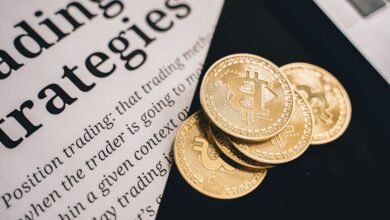Inflation Unveiled: Understanding Its Impact on Purchasing Power, Investment Strategies, and Historical Lessons

Inflation, a term often felt in the wallets of consumers, plays a pivotal role in shaping economic landscapes and influencing financial decisions. As prices rise, the purchasing power of money diminishes, creating ripples that extend to various asset classes, investments, and even employment dynamics. Understanding how inflation interacts with consumer behavior and financial markets is crucial for navigating today’s economic climate. This article delves into the intricacies of inflation, exploring its impact on consumer purchasing power, the relationship between inflation and interest rates, and effective strategies for protecting investment portfolios. Additionally, we will examine historical instances of hyperinflation, the responses of central banks through monetary policy, and the significant role of supply chain disruptions in exacerbating inflationary pressures. By analyzing these factors, we aim to equip readers with a comprehensive understanding of inflation’s multifaceted effects and provide insights into maintaining financial resilience in uncertain times.
- 1. Understanding Inflation: Effects on Consumer Purchasing Power and Asset Values
- 2. Navigating Inflation: Strategies for Protecting Your Portfolio
- 3. Lessons from History: Hyperinflation and Central Banks' Responses to Economic Challenges
1. Understanding Inflation: Effects on Consumer Purchasing Power and Asset Values
Inflation refers to the sustained increase in the general price level of goods and services in an economy over time. As prices rise, the purchasing power of consumers declines, meaning that each unit of currency buys fewer goods and services than it did previously. This erosion of purchasing power can significantly affect household budgets, as consumers find themselves spending more to maintain the same standard of living. Essential items, such as food, housing, and fuel, often see sharper price increases, making it particularly challenging for lower- and middle-income families to manage their expenses.
Inflation also influences asset values. For instance, real estate and commodities such as gold typically act as hedges against inflation, as their prices tend to rise in tandem with or faster than general price levels. Conversely, fixed-income investments, such as bonds, can lose value in real terms during inflationary periods, as the interest payments may not keep pace with rising prices. Consequently, investors must consider how inflation impacts both their current purchasing power and their investment portfolios to make informed financial decisions.
Understanding these dynamics is crucial for both consumers and investors. While inflation can diminish the value of cash holdings and fixed-income assets, it can also present opportunities in other asset classes. Adapting to inflationary pressures requires a proactive approach to budgeting and investing, making it essential to stay informed about economic trends and monetary policies that influence inflation rates.
2. Navigating Inflation: Strategies for Protecting Your Portfolio
In an inflationary environment, preserving the value of your investment portfolio becomes crucial. Here are several strategies to help protect your assets from the erosive effects of rising prices.
1. **Diversification**: One of the fundamental principles of investing, diversification involves spreading your investments across various asset classes. By including stocks, bonds, real estate, and commodities, you can mitigate risks associated with inflation. Historically, real assets like real estate and commodities, such as gold, tend to perform well during inflationary periods, providing a hedge against rising costs.
2. **Inflation-Protected Securities**: Consider investing in Treasury Inflation-Protected Securities (TIPS) or other inflation-linked bonds. These securities adjust their principal value based on inflation rates, ensuring that your investment maintains its purchasing power over time.
3. **Equities**: Stocks have the potential to outpace inflation in the long run, as companies may pass on increased costs to consumers through higher prices. Focusing on sectors that traditionally perform well during inflation, such as consumer staples, energy, and utilities, can provide additional protection. Additionally, investing in companies with strong pricing power can help shield your portfolio from inflation's impact.
4. **Real Estate Investments**: Real estate can be an effective hedge against inflation. As property values and rents typically rise with inflation, investing in real estate investment trusts (REITs) or direct property ownership can help preserve capital. Moreover, rental properties may generate increasing cash flow as lease agreements adjust for inflation.
5. **Commodities**: Direct investment in commodities, such as gold, silver, and agricultural products, can serve as a hedge against inflation. These physical assets often retain value when currency purchasing power declines, making them a valuable addition to an inflation-sensitive portfolio.
6. **Alternative Investments**: Consider exploring alternative investments, such as private equity, venture capital, or hedge funds. These investments may offer returns that are less correlated with traditional markets and can help protect your portfolio from inflationary pressures.
7. **Review and Adjust**: Regularly reviewing your investment strategy and asset allocation is essential. As inflation trends develop, making adjustments to your portfolio can help you stay ahead of potential risks. This may involve reallocating assets or increasing exposure to inflation-sensitive investments.
By implementing these strategies, investors can better navigate the challenges posed by inflation and safeguard their portfolios against potential value erosion.
3. Lessons from History: Hyperinflation and Central Banks' Responses to Economic Challenges
Hyperinflation has historically served as a stark reminder of the consequences of unchecked monetary policy and economic mismanagement. Notable examples, such as Germany's Weimar Republic in the 1920s and Zimbabwe in the late 2000s, illustrate the devastating effects on economies and societies. In these cases, excessive printing of money to cover government debts and reparations led to skyrocketing prices, rendering currency nearly worthless and eroding public trust in financial systems.
The lessons from these historical episodes emphasize the importance of sound fiscal and monetary policies. Central banks play a critical role in stabilizing economies during periods of inflation by implementing measures to restore confidence and control price levels. For instance, in response to hyperinflation, the German government introduced a new currency, the Rentenmark, which was backed by real assets like land and industrial output. This move helped to stabilize prices and restore public confidence in the economy.
Moreover, central banks learned that proactivity is essential in combating inflation. They began to adopt more stringent monetary policies, such as raising interest rates and reducing the money supply, to preemptively address inflationary pressures. These strategies aim to curb excessive demand and anchor inflation expectations, which can otherwise spiral out of control.
Additionally, the experience of hyperinflation has highlighted the importance of transparency and communication from central banks. By clearly articulating their goals and strategies, central banks can help manage public expectations and foster trust in their ability to maintain price stability.
In summary, historical instances of hyperinflation illustrate the dire consequences of poor economic management and the vital role central banks play in safeguarding economies against inflation. The lessons learned emphasize the need for prudent monetary policies, effective communication, and a commitment to restoring public confidence in financial systems.
In conclusion, inflation remains a complex and multifaceted economic phenomenon that significantly affects consumer purchasing power, investment strategies, and overall economic stability. As we have explored, rising inflation erodes purchasing power, compelling consumers to adjust their spending habits and forcing investors to rethink their asset allocations. By understanding the intricate relationship between inflation and interest rates, individuals can better navigate this economic landscape and implement effective strategies to protect their portfolios.
Historical examples of hyperinflation serve as stark reminders of the potential consequences of unchecked inflation and the critical role central banks play in managing monetary policy to maintain economic equilibrium. Additionally, the ongoing challenges posed by supply chain disruptions highlight the need for adaptability in both personal finance and investment decisions.
Ultimately, while inflation poses various challenges, it also presents opportunities for those who are informed and prepared. By staying vigilant and proactive, consumers and investors alike can mitigate the adverse effects of inflation, safeguard their financial well-being, and position themselves for success in an ever-evolving economic environment.





